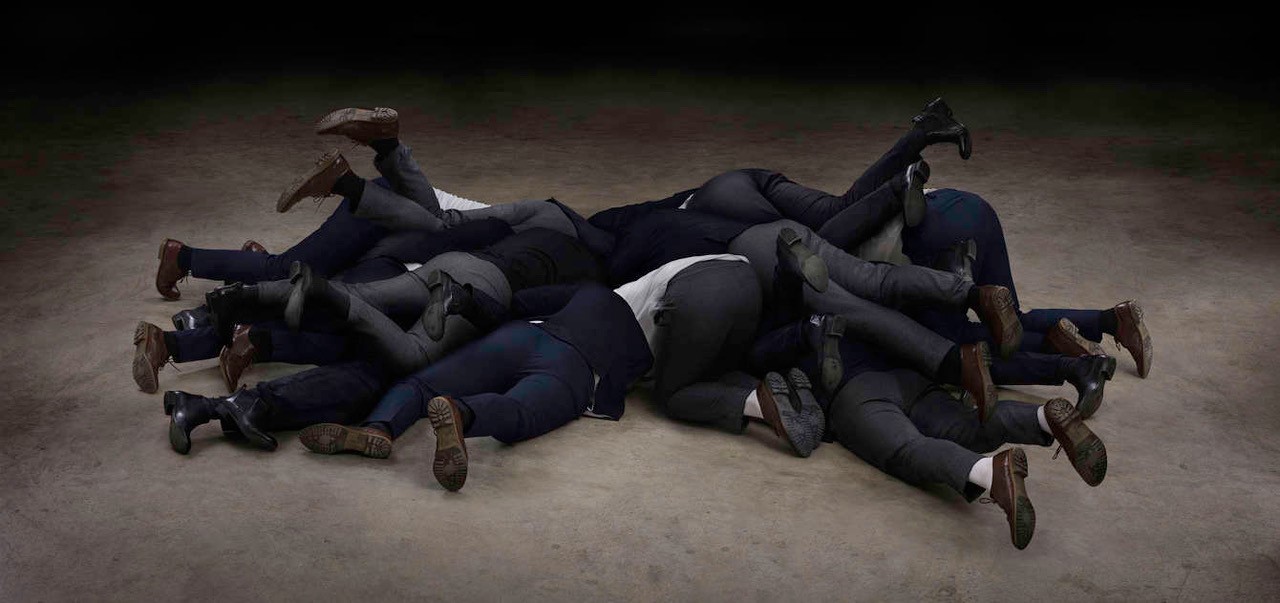


Tina Hage, ‘Pancake Greaze I (stack)’, from the series ’The one that couldn’t get away’, 2020. Image Courtesy the artist.
Tina Hage’s photographs often depict bodies in close proximity, tangled in piles of limbs or jostling for space in a crowd. While these works were created before our current predicament, they recall a not too distant reality, where daily urban life meant being part of a mass of bodies.
Hage’s photographs combine the aesthetics of documentary photography with the making process of painting. She isolates a specific, meaningful moment and re-enacts it by photographing herself in each of the multiple roles and digitally composing it. The compositions draw our attention to the constructed nature of the scene, toying with the idea of supposedly candid photojournalistic images. The re-enactments are based on photojournalistic imagery either taken by Hage or found in a variety of media – often focusing on the social and political content of the imagery.
Her latest series, The One That Couldn’t Get Away, uses found images of games played in English public schools. Games include Pancake Greaze, which is played at Westminster School where a pancake is tossed in the air and students fight to grab the largest piece, and the Eton Wall game, which resembles Rugby Union.
The photographs emphasise the physicality and conflict of the games, yet there is a humour in the incongruity of boys in suits and ties wrestling for a pancake. Hage subverts the image by replacing the male bodies with her own and as a woman of mixed descent highlighting the power dynamics of the scene. These games have been played for hundreds of years and are part of the tradition and legacy of institutions which have produced a high proportion of Britain’s political elite. Hage is interested in what these traditions tell us about social relations and the values upheld by institutions like Eton, which has educated 19 British Prime Ministers and a number of members of the Royal family.
In 2009, Hage was in Beijing towards the end of the SARS outbreak. Whilst traveling on trains she noticed passengers wearing masks, something she was unaccustomed to seeing at the time. During rush hour people were often exhausted and sometimes appeared ill on the crammed trains. Hage would take photographs on these journeys that she later recreated for her Universal Pattern series, which explores the collective as represented in mass media. In Universal Pattern IV, the artist is shown in various states of exhaustion or sleep, wearing a mask or coughing into a tissue.
Mere months ago, the work could be read as depicting the universal discomforts of public transport. Today, it reflects the shared anxiety around sickness and the proximity of bodies, as well as our altered reality where the indignities of public transport are no longer a part of daily life for many. In Hage’s photographs, scenes are symbolic and the crowd functions as a reflection of society. If we look close enough there is a lot the mass can tell us about ourselves.